This pub takes is name from the hamlet of Botwell which once stood in what is now Hayes’ town centre. These premises were the home of the furnishers S Moore & Son, which moved here in 1933 and remained for 65 years.
Photographs and text about George Orwell.
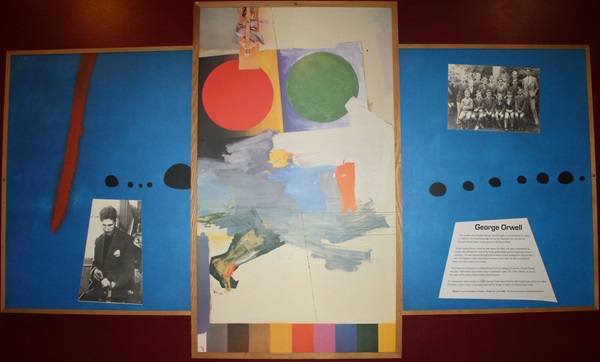
The text reads: The novelist and essayist George Orwell taught in a small school in Hayes in 1932-3. The Hawthorns High School for Boys later formed part of Fountain House Hotel on the corner of St Mary’s Road.
Orwell worked there under his real name, Eric Blair. He was unimpressed with Hayes, describing it as “one of the most godforsaken places I have ever struck”. However, he was inspired enough by it to write a poem entitled On a Ruined Farm near His Master’s Voice Gramophone Factory. Soon after he left, he published Down and Out in Paris and London.
He is best remembered for writing Animal Farm, an allegory of events in Soviet Russia and also 1984, which described a future totalitarian state. The novel 1984 is, of course, the origin of the saying “Big Brother is watching you”.
In a newspaper article written in 1946 George Orwell described his ideal English pub, which he called The Moon Under Water. It has since inspired the design of many J D Wetherspoon pubs.
Photographs and text about industry in the area.
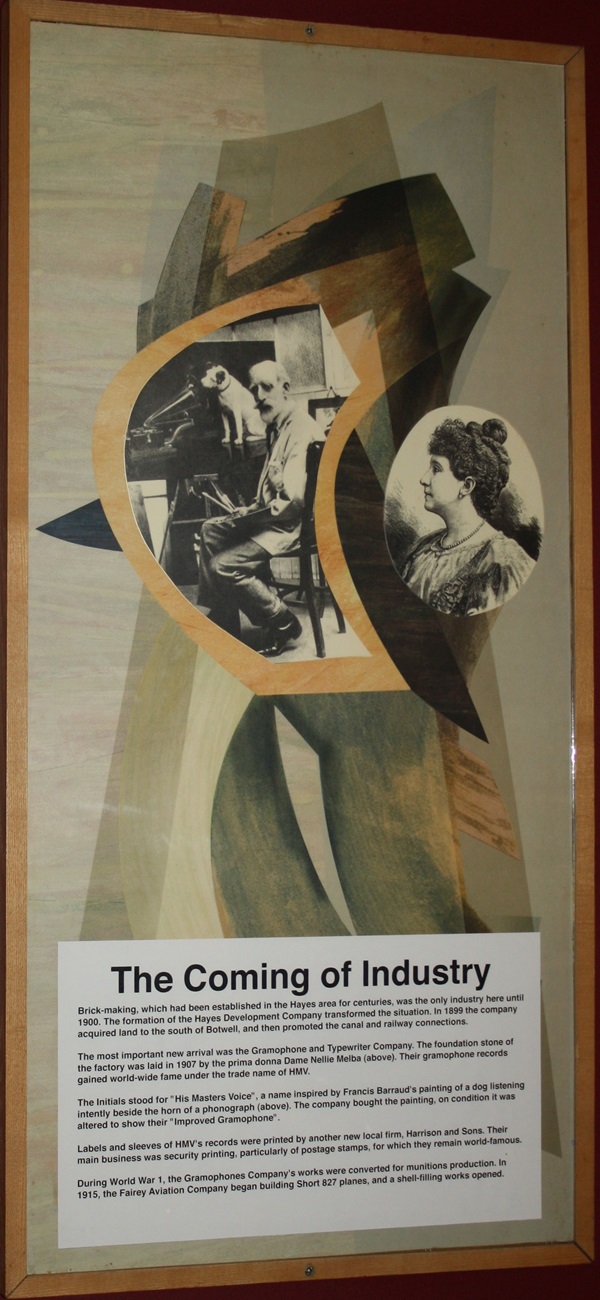
The text reads: Brick-making, which had been established in the Hayes area for centuries, was the only industry here until 1900. The formation of the Hayes Development Company transformed the situation. In 1899 the company acquired the land to the south of Botwell, and then promoted the canal and railway connections.
The most important new arrival was the Gramophone and Typewriter Company. The foundation stone of the factory was laid in 1907 by the prima donna Dame Nellie Melba. Their gramophone records gained world-wide fame under the trade name of HMV.
The initials stood for “His Masters Voice”, a name inspired by Francis Barraud’s painting of a dog listening intently beside the horn of a phonograph (above). The company bought the painting, on condition it was altered to show their “Improved Gramophone”.
Labels and sleeves of HMV’s records were printed by another new local firm, Harrison and Sons. Their main business was security printing, particularly of postage stamps, for which they remain world-famous.
During World War 1, the Gramophone Company’s works were converted for munitions production. In 1915, the Fairey Aviation Company began building Short 827 planes, and a shell-filling works opened.
A print and text about Stephen Storace.
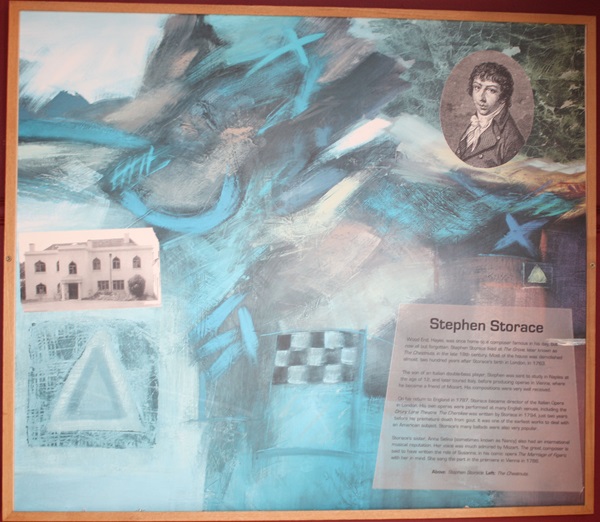
The text reads: A print of Wood End, Hayes, was once home to a composer famous in his day, but now all but forgotten. Stephen Storace lived at The Grove, later known as The Chestnuts, in the late 18th century. Most of the house was demolished almost two hundred years after Storace’s birth in London, in 1763.
The son of an Italian double-bass player, Stephen was sent to study in Naples at the age of 12, and later toured Italy, before producing operas in Vienna, where he became a friend of Mozart. His compositions were very well received.
On his return to England in 1787, Storace became director of the Italian Opera in London. His own operas were performed at many English venues, including the Drury Lane Theatre. The Cherokee was written by Storace in 1794, just two years before his premature death from gout. It was one of the earliest works to deal with an American subject. Storace’s many ballads were also very popular.
Storace’s sister, Anna Selina (sometimes known as Nancy) also had an international musical reputation. Her voice was much admired by Mozart. The great composer was said to have written the role of Susanna, in his comic opera The Marriage of Figaro, with her in mind. She sang the part in the premiere in Vienna in 1786.
A print of the Beck Theatre and The Blue Pool.
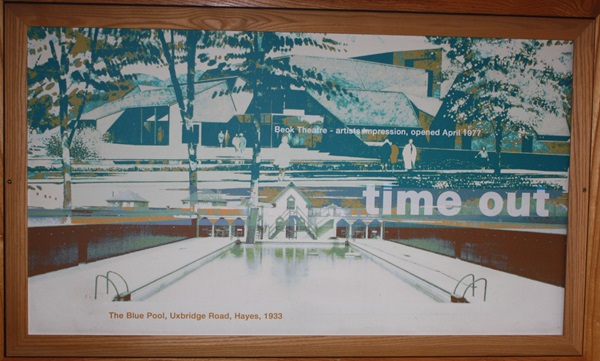
Prints of Hayes in the early days.
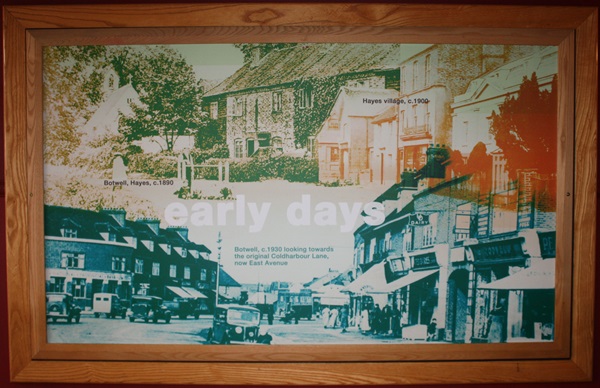
Left: Botwell, Hayes c1890
Right: Hayes village c1900
Bottom: Botwell, c1930 looking towards the original Coldharbour Lane, now East Avenue.
A print of Blythe Road, outside EMI shipping bays, 1953.
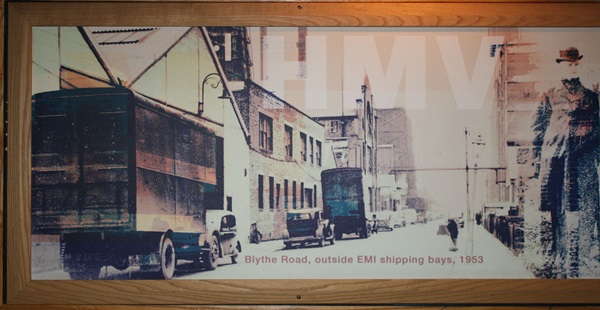
A print of Edward Lloyd cutting the first turf on the site of the HMV (later EMI) factory, 1907.
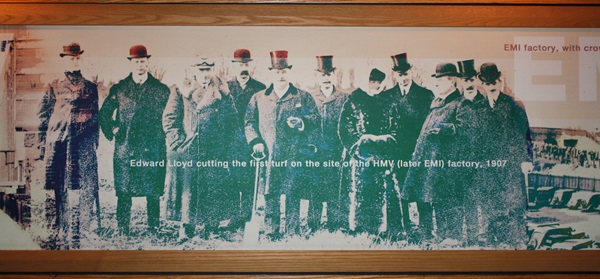
A print of the EMI factory, with crowds watching the funeral train of George VI on its way to Windsor.
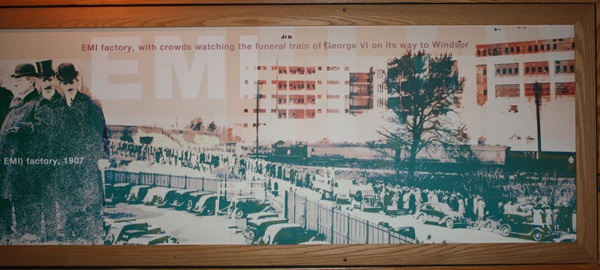
Prints of Canal Bridge, Station Road c1914 and Hayes Railway Bridge 1931.
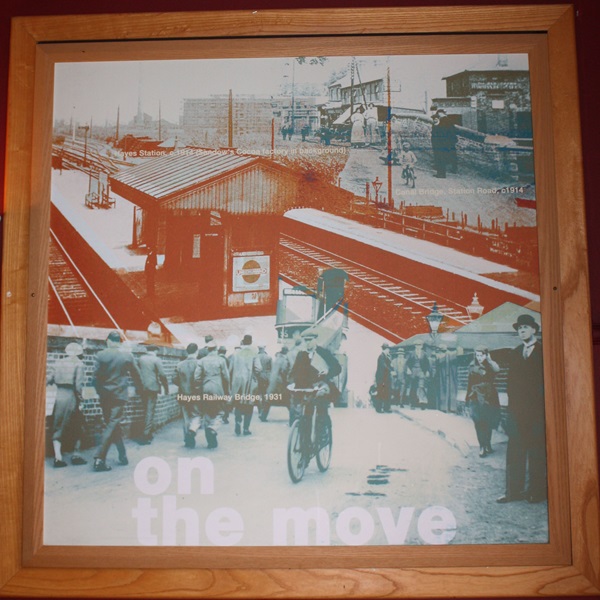
Photographs and text about country houses in the area.
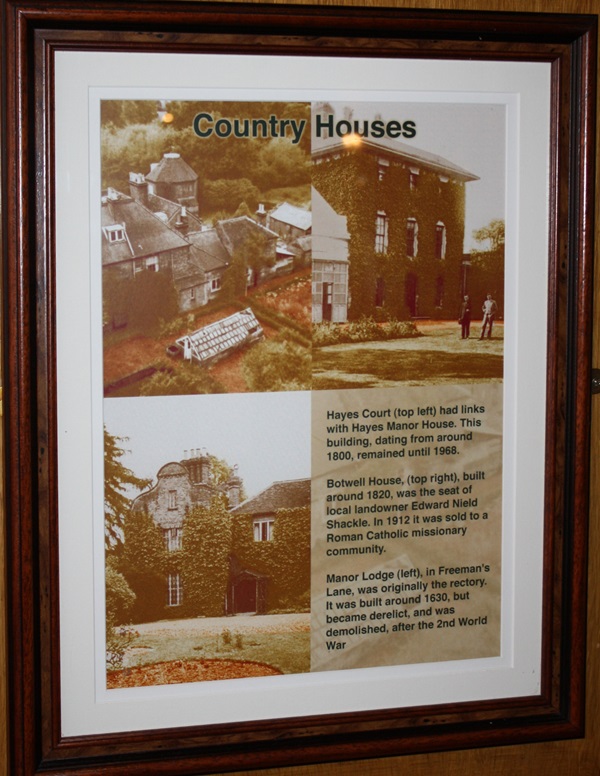
The text reads: Hayes Court had links with Hayes Manor House. This building, dating from around 1800, remained until 1968.
Botwell House, built around 1820, was the seat of local landowner Edward Nield Shackle. In 1912 it was sold to a Roman Catholic missionary community.
Manor Lodge, in Freeman’s Lane, was originally the rectory. It was built around 1630, but became derelict, and was demolished after the 2nd World War.
Prints and text about Park Farm.
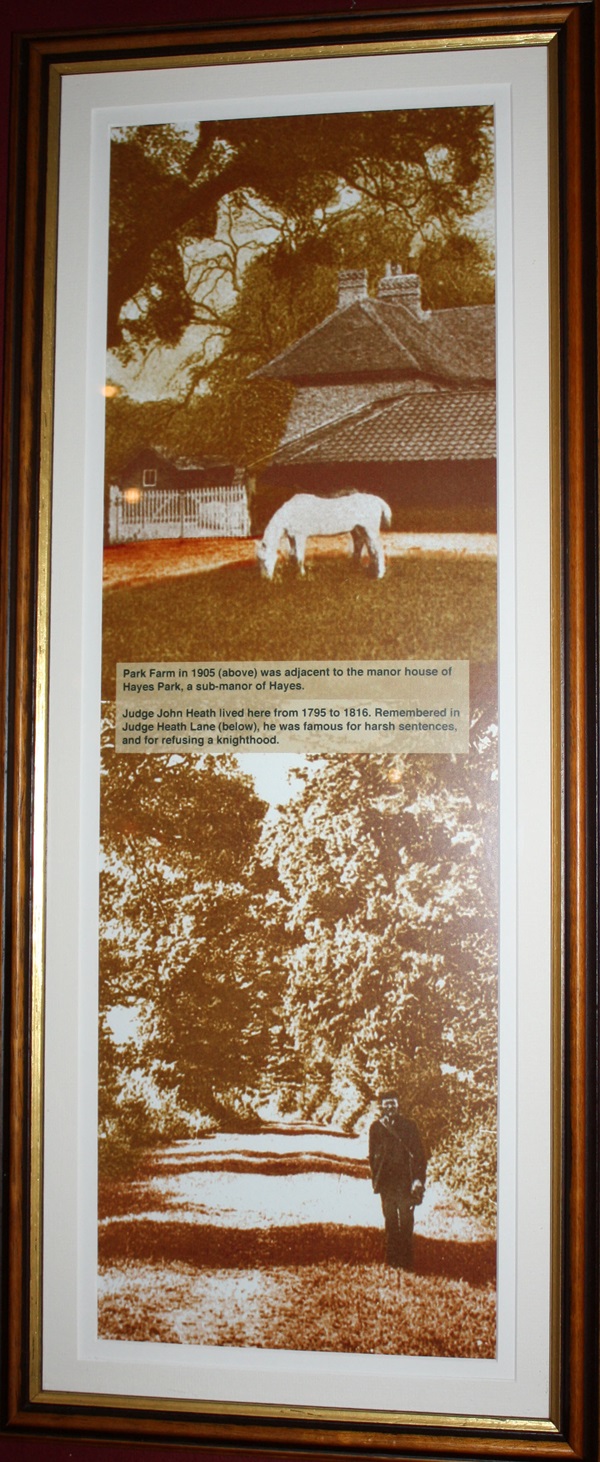
The text reads: Park Farm in 1905 was adjacent to the manor house of Hayes Park, a sub-manor of Hayes.
Judge John Heath lived here from 1795 to 1816. Remembered in Judge Heath Lane, he was famous for harsh sentences, and for refusing a knighthood.
Photographs and text about ancient settlements.
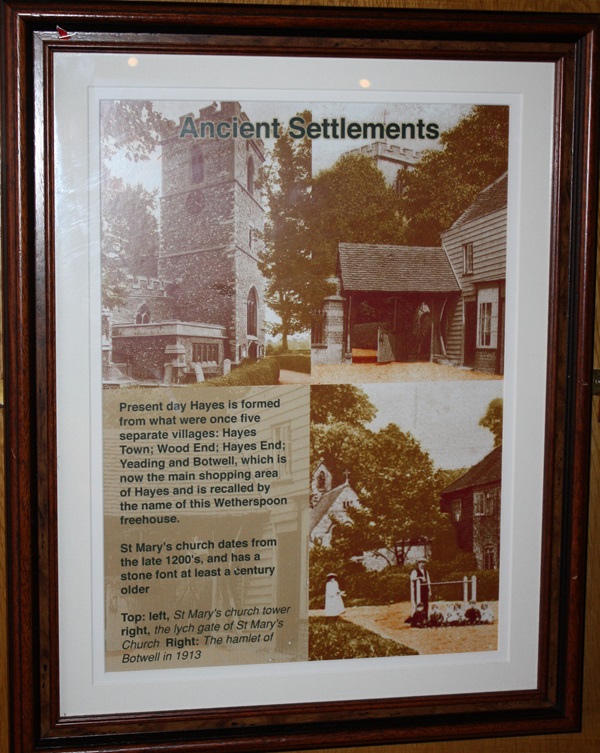
The text reads: Present day Hayes is formed from what were once five separate villages: Hayes Town; Wood End; Hayes End; Yeading and Botwell, which is now the main shopping area of Hayes and is recalled by the name of this Wetherspoon freehouse.
St Mary’s Church dates from the late 1200’s, and has a stone font at least a century older.
Photographs of Hayes Village in c1908 and c1925.
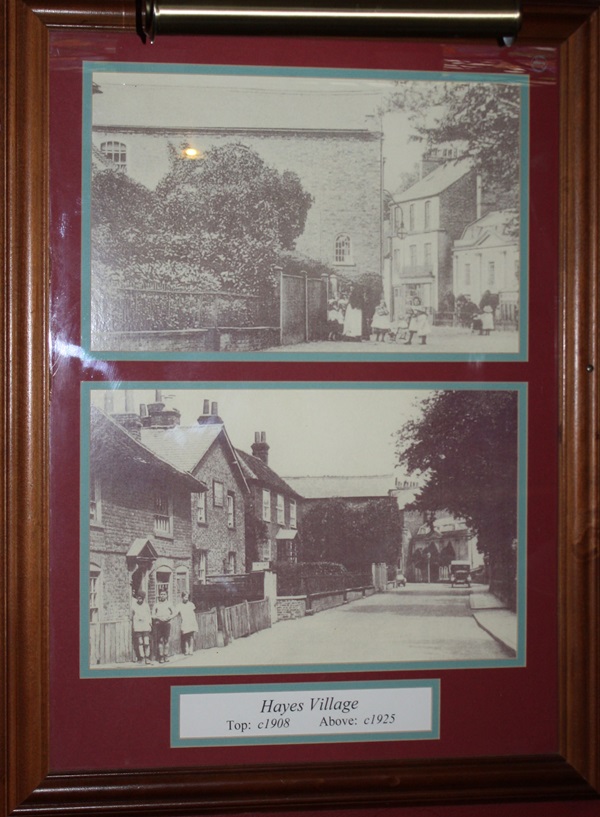
A watercolour of Botwell in 1821 and of Church Green, Hayes Town, c1900.
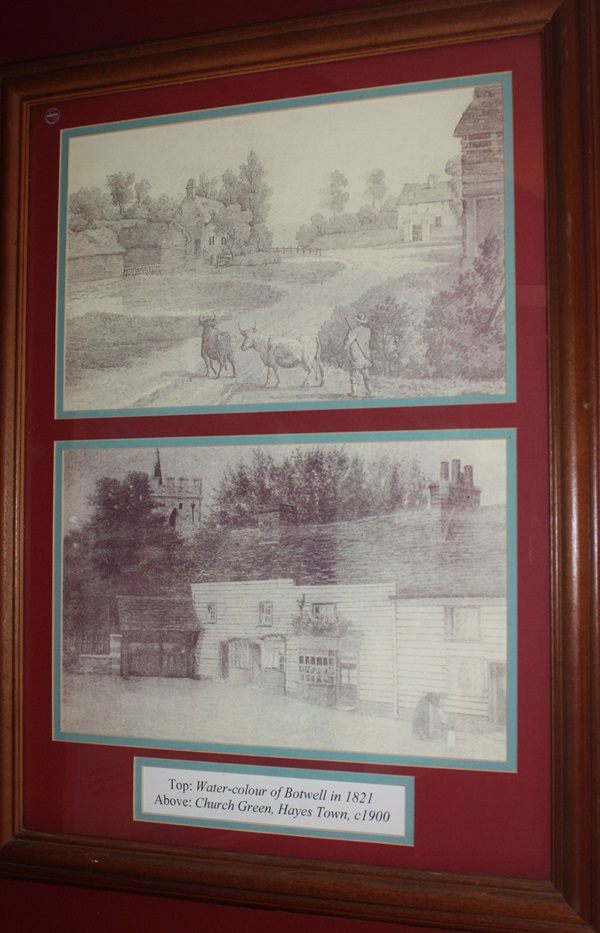
Photographs of Botwell facing Coldharbour Lane and widening the railway bridge.
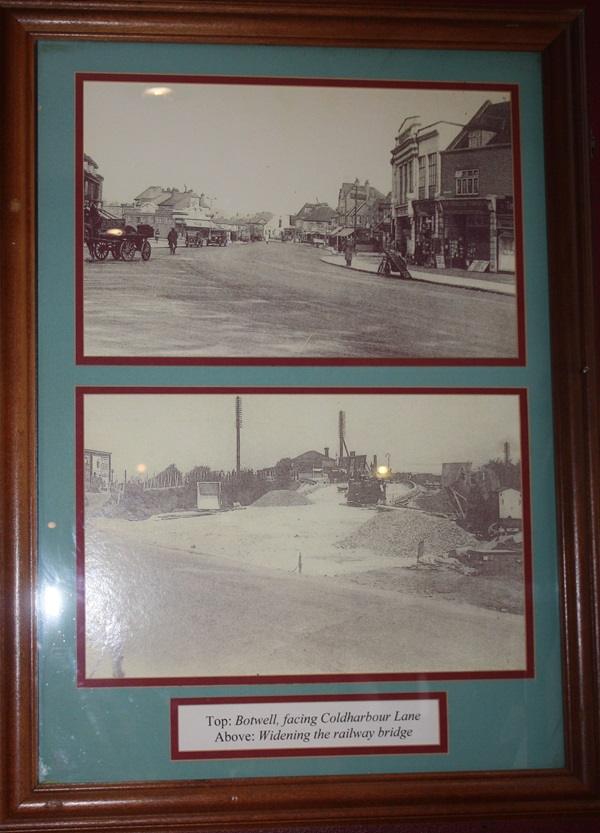
External photograph of the building – main entrance.
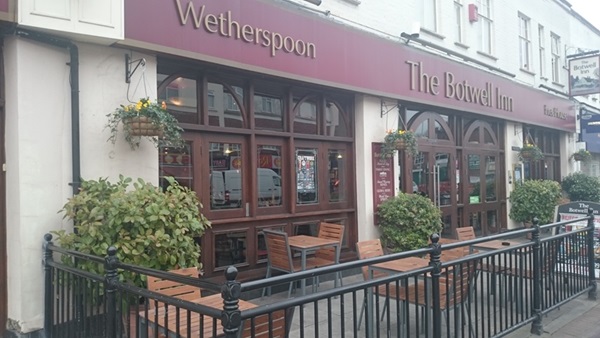
If you have information on the history of this pub, then we’d like you to share it with us. Please e-mail all information to: pubhistories@jdwetherspoon.co.uk